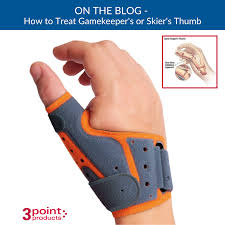Gamekeeper Thumb, also known as skier’s thumb, is a type of injury that affects the ulnar collateral ligament (UCL) of the thumb. This ligament provides stability to the thumb and is crucial for grasping and pinching motions. While the term originated from the injury commonly seen in gamekeepers (those who cared for game animals), it has become increasingly relevant in discussions about gaming-related injuries.
Causes of Gamekeeper Thumb
Gamekeeper thumb is typically caused by:
- Repetitive Stress: Prolonged use of gaming controllers, especially those requiring intense thumb movement, can strain the UCL.
- Sudden Impact: An abrupt motion, such as a fall while skiing or an awkward twist of the thumb, can also lead to this injury.
- Improper Grip: Using an incorrect grip or holding the controller in a way that places excess pressure on the thumb can contribute to the development of the condition.
Symptoms of Gamekeeper Thumb
Symptoms of gamekeeper thumb can vary in severity and may include:
- Pain and Tenderness: Discomfort at the base of the thumb, particularly when gripping or pinching.
- Swelling: Inflammation around the joint of the thumb.
- Reduced Range of Motion: Difficulty moving the thumb or gripping objects effectively.
- Instability: A sensation of looseness in the thumb joint, making it difficult to perform certain tasks.
Diagnosis and Treatment
Diagnosis
If you suspect you have gamekeeper thumb, a medical professional can conduct a physical examination to assess your symptoms. Imaging tests, such as X-rays or MRI scans, may be used to confirm the diagnosis and rule out other injuries.
Treatment Options
- Rest: Reducing gaming time and avoiding activities that exacerbate the symptoms can help the thumb heal.
- Ice and Compression: Applying ice packs and using a compression bandage can reduce swelling and pain.
- Splinting: A thumb splint may be recommended to immobilize the joint and allow for healing.
- Physical Therapy: A physical therapist can provide exercises to strengthen the thumb and improve flexibility once the initial pain subsides.
- Medication: Over-the-counter pain relievers, such as ibuprofen or acetaminophen, can help manage pain and inflammation.
- Surgery: In severe cases where conservative treatments fail, surgical intervention may be necessary to repair the damaged ligament.
Prevention Tips for Gamers
To reduce the risk of developing gamekeeper thumb, gamers can take several proactive measures:
- Take Regular Breaks: Implement the 20-20-20 rule: every 20 minutes, take a 20-second break to look at something 20 feet away and stretch your hands and fingers.
- Maintain Proper Grip: Ensure you’re holding the controller correctly. A relaxed grip can help alleviate pressure on the thumb.
- Stretch and Strengthen: Incorporate hand and thumb stretches into your routine to improve flexibility and strength.
- Use Ergonomic Equipment: Consider investing in ergonomic controllers or gaming setups that reduce strain on your hands and fingers.
- Listen to Your Body: If you experience pain or discomfort, don’t push through it. Acknowledge the signs and take necessary breaks.
Conclusion
Gamekeeper thumb is a condition that can affect avid gamers, but with awareness and proactive measures, it can be managed and prevented. By understanding the causes, symptoms, and treatment options, players can continue to enjoy their gaming experiences while minimizing the risk of injury. Prioritizing hand health is essential in ensuring a long and enjoyable gaming journey. Remember, a well-rested thumb is a happy thumb.




